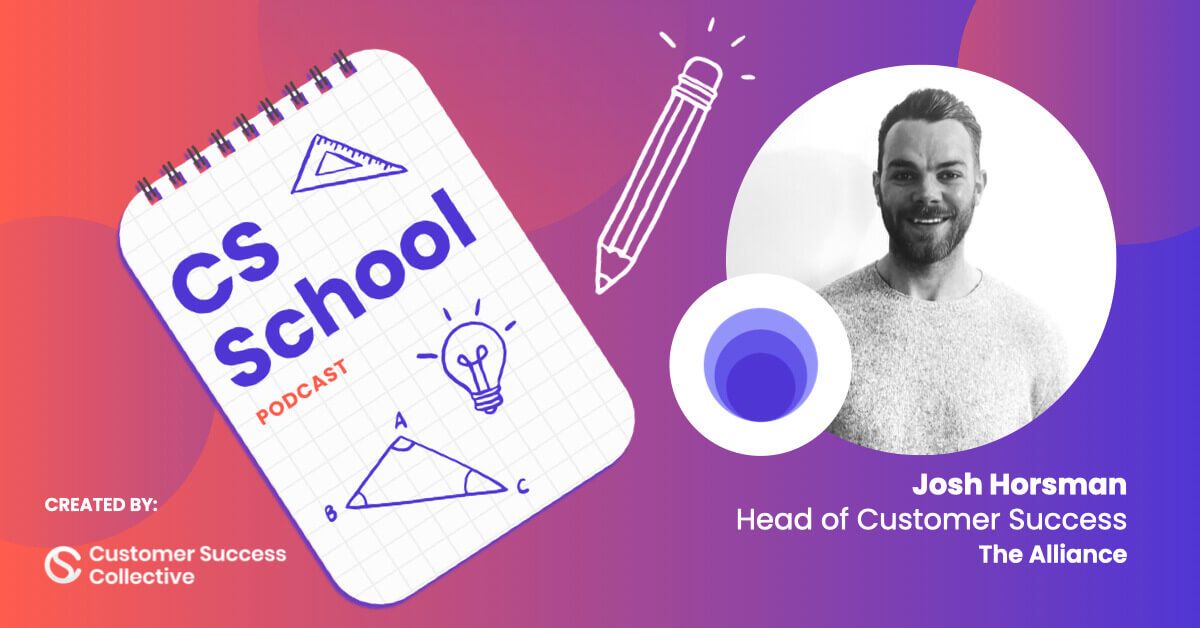When signing up for your SaaS product, your customers are making a long-term investment. You’re hoping they’re gonna stick with your product for months, and preferably even years.
And they’re hoping that, in return, your product is going to provide them with a sustained solution to their evolving needs. A subscription-based model is not a one-and-done deal, it’s a long-term relationship.
Of course, this is true of all modern businesses, whether they’re B2B or B2C. We don’t want customers to churn as soon as they’ve arrived, we want our customers to ‘stick’ to our products or services. We all want that long-term relationship. But like all long-term relationships, it’s built on a bedrock of trust.
So, it’s a no-brainer that business leaders are making customer care a top priority, right?
What if we told you that, according to the CMO Council, only 14% of marketers say that customer-centricity is a hallmark of their companies, and only 11% believe their customers would agree? 🤯
It might sound obvious, but if you can make customer-centricity and empathy an integral part of your company’s culture, it can really give your org an edge in terms of customer conversion and retention.
But too often empathy is all-talk, so let’s stop talking. Here are some practical strategies for building a customer-centric culture.
1. Create a culture of empathy from within
Okay, so time for another no-brainer. Employees don’t leave their jobs, they leave their employers. According to Gallup, 70% of employee motivation is influenced by their employer. Toxicity can be contagious.
If employees don’t feel like they're an integral and valued part of their org, they’re unlikely to feel pride in their company.
What’s this got to do with the customer? Well, when this happens the toxicity bleeds to the outside in customer-facing encounters.
Customers aren’t seeing employees shouting from the rooftops about the incredible value the org offers. Instead, they’re seeing jaded, demotivated employees who couldn’t care less about getting anyone else on board.
You know how it is, when you own something that’s really shiny and impressive, a new car, for example, you want to show it off to everyone. This is how you want your team to feel about your org.
So, how do you make your team feel valued? How do you ensure that you’re showing empathy on a consistent basis?
Asking the wrong questions
"Why isn’t that report done?"
"Can you get that report done by Friday?"
How many of us have had to deal with these kinds of questions?
But what’s wrong with them? They’re closed questions, meaning they’re the kind of questions designed to elicit simply a yes or no response. Most senior managers are very busy, and they want to get to the bottom of a problem quickly.
From a purely functional standpoint, these questions can be extremely useful. The problem is they make employees feel like a tool that are used simply to get to the bottom of an organizational problem.
We’ve all heard the cliche: unhappy employees feel like a cog in a wheel. Employees feel dehumanized, which is kind of the opposite of empathy. And now you’re expecting them to head out to your customers with that mindset.
The right questions
Let’s try it like this instead.
"Is there anything I can do to help you with that report?"
Better yet, try:
"Is there anything our organization can do to make the report-writing process work better for you?"
With these kinds of questions, you’re asking employees for their considered feedback. These are open questions. According to Gallup:
"Those words can immediately create a trusting atmosphere in which feedback is exchanged and processed effectively. A feedback-rich environment drives business outcomes."
There’s that keyword, trust. You can’t expect to elicit trust in your customers when you haven't created a culture of trust within your org. It all starts with making employees feel valued through trust and empathy. And that can be achieved through asking the right questions.
So, let’s say we’ve created trust and empathy within the org, the next step is to convince your senior stakeholders that customer empathy is something worth investing in. We’ve got our work cut out for us. 💪

2. Get your C-suite aligned with empathy
Believe it or not, empathy is an investment for many successful organizations. Many SaaS orgs have found that a customer success department is not only integral for getting customers through the door, but also in ensuring that customers stick with you.
Maybe you want to invest in a customer success department, for example. But investing in a team whose whole purpose hinges upon empathy and attentiveness is not cheap. So, senior stakeholders have to be convinced of the real value in making customer empathy an essential part of your org.
Guru Bhat, VP of customer success at Paypal, describes how empathy can tie in with your organization’s bottom line metrics.
"Of course, one of the principal goals of any organization is to grow and expand, and they're always plenty of opportunities for things to go wrong. With so many different customers depending on us, all with varying levels of needs, there’s a lot of potential for misunderstanding and miscommunication.
For us, it all starts with being a customer-obsessed company. We have the privilege to serve millions of customers around the world, and we want to be worthy of that trust."
All organizations are concerned with growth
Senior stakeholders are concerned with growth, first and foremost, and in order for you to persuade them that your initiative is worth the time – and more importantly– the money, you have to convince them of how customer-centricity is going to help you grow and stay growing.
Guru has perhaps the best argument for this because he highlights that, as an org continues to grow, you’re inevitably dealing with a whole host of different folks.
And, well, you know what they say: different strokes for different folks. Each of these new conversions is going to have its own demands for your service.
If you don’t have a team that’s dedicated to catering to each of these individual needs, you’re gonna be dealing with a leaky bucket organization. In other words, your customers are churning left, right and center.
So, immediately we can see how empathy ties in with a baseline metric your c-suite is going to be looking at.
A one-size-fits-all approach?
Paula Mendes, a highly experienced SaaS consultant and channel consultant at HubSpot, speaks explicitly about how tailoring the product to the individual needs of a customer benefited HubSpot’s strategy.
"We quickly realized it was not possible to help customers achieve their goals if we had a one size fits all onboarding. Our onboarding and professional services needed to be tailored to our customer's most important priorities.
For example, we can have two marketing hub customers that purchase HubSpot with completely different goals.
One might want to focus on improving quality lead generation, and the other might want to automate their entire marketing process. If each customer sees success differently, we should provide unique paths to their goals through the onboarding that we offer them."
Stripping this down to its most basic marketing principle: are we meeting the pain points of the customer? If not, conversion is pretty difficult. Secondly, are we continuing to meet those needs as they evolve over time? If not, churn becomes a certainty.
3. Invest in a solid onboarding process
That moment when you successfully get a customer through the door is obviously a really exciting time. But it’s also precarious.
First impressions are everything, and if customers don’t see that your organization is attentive to their needs right off the bat, that door to your organization becomes a revolving door. Customers are leaving almost as quickly as they’re arriving.
Firstly, does your org have an onboarding process? Secondly, is it solid enough to keep meeting the needs of customers throughout that shaky first month when they’re still getting accustomed to your solution?
With SaaS products, the power is well and truly in the hands of the customer in that they have the power to cancel their subscription. They have to be convinced of your org's value.
Your product is an essential tool
Michelle Wideman, Chief Customer Officer at Onna, found great success in implementing an onboarding process. Her organization was able to convince the customer that this onboarding process was not just a brief fling, but that they were building a stable, long-term relationship. 👇
"I've had customers tell me they went with us over a different vendor because they truly felt like we were going to partner with someone throughout their entire journey. This means that, in the case of our competitor, the customer felt like they’d lost interest in them once they’d made the sale."
Most orgs know that those early contact days are essential, but some don’t realize that the key to establishing a good customer-vendor relationship is in laying the groundwork for a relationship long term.
The sticking point is in convincing customers that your product is not a one-and-done deal, it’s an integral, reliable tool that their day-to-day professional and personal lives are going to revolve around.
But how do we make this apparent in the onboarding process?
4. Get your teams aligned
In many ways, it’s difficult not to see those early days in the customer-org interaction as being very similar to the dating process.
Picture the scene, your sales rep does a really great job at making sure that your solution is going to solve their pain point. The customer feels seen and heard and valued. The customer signs up.
Now enter the customer success person. But they have no idea which person on the sales team spoke to their client first. All they’ve been given is a sketchy brief containing some pretty basic info on the customer.
Although your team is made up of a vast array of people, each person, when they interact with a client, is representing your org as a collective entity.
Imagine you're on a date with someone who seems really great. They’re attentive and empathetic and they ask all the right questions. But on the second date, they can barely remember anything beyond your name.
They ask the same questions they asked you the first time. It’s not just unimpressive, it’s incredibly disappointing. And it certainly doesn’t lay the bedrock for long-term trust.
A clear line of communication
Paula Mendes at HubSpot, found success in revamping her org’s onboarding process when she realized that her company needed to prioritize alignment during the onboarding process.
"We noticed that the sales and service teams were not working together in this initial and crucial step of the relationship with the customer. Sales used to work with the scribes for months, gather all this information but most of it gets lost in a black hole.
The onboarding specialist did not have easy access to it, and the customer would get into their portal after months of discussing their needs and nothing was customized. It seems that nothing was valued by the sales rep, nothing is in the portal to help them get started."
The solution: align your sales and customer teams
There should be a clear line of communication between sales and customer services, so that when the customer opens your tool for the first time, your onboarding specialist has already provided a clear ‘getting started’ checklist based on what they’ve been discussing with your sales reps.
What impression does this make: this is an org that listens to and values my goals and struggles.
5. Leverage customer data
And here we’re not talking about that very important quantitative data which tells all about the what, eg, what’s your conversion rate like? Or what's your churn rate like? It’s also about the qualitative data: the why. Here your looking at metrics like:
NPS score: a measure of customer loyalty and satisfaction, e.g,"how likely would you be to recommend our product to a friend?"
User engagement score. If your product offers a free trial this can be a good measure of which users are ready to become full paying customers. It can also identify which users aren’t using your product as much as you'd like so that you can swoop in and save them from churning.
Customer Effort Score. Especially if customers are using your product as part of their working lives, a really difficult orientation process can lead to churn. Identify what aspects users are finding hard and refine them.
Mike Pilawski, Chief Product Officer at Smallpdf, has this to say about customer effort score.
“One of the best metrics we use is customer effort score. After the customer takes action, we ask them whether it was more or less difficult than they expected; that way we get a sense of their emotional state.
We see it too when customers try an action and fail. We look at the completion rate for actions, and we know that whenever they fail, there is a negative reaction. So if you can figure out those moments in your product, you can build it to communicate better with the customer.”
The one-two punch
You want to use your past failures to improve your customer service over time. The effect of this is a one-two punch.
1. Future customers get a better experience. 👇
Conversion rate = 📈
2. Existing customers can see you’re optimizing the user experience around their needs.👇
Churn rate = 📉
why's
Star Hofer, Vice President of Customer Success at PartnerStack.
Star highlights an important point in emphasizing how qualitative data can help us identify the point in the customer buying cycle when things go wrong.
Doing so can help you to identify those weak links in the process where vital intelligence isn’t being conveyed effectively. If you want to establish the kind of good alignment we discussed in step four, it’s all about bridging those gaps in the process.
Let’s create that bridge of support for our customers from start to finish.



 Follow us on LinkedIn
Follow us on LinkedIn








